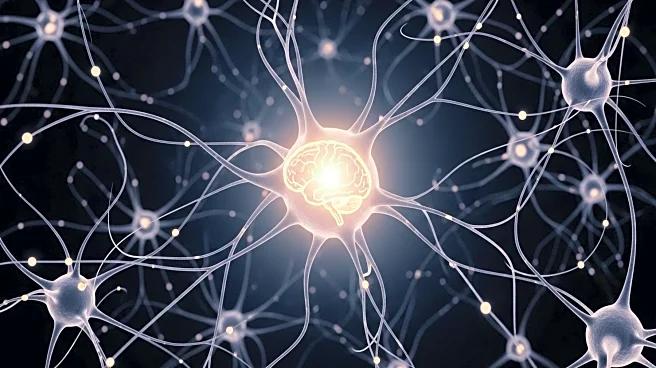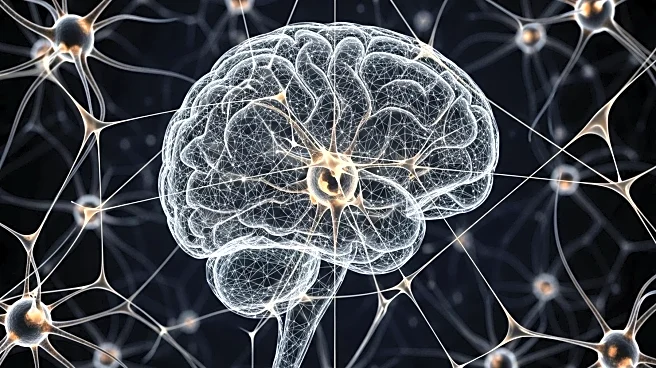What's Happening?
A team of neuroscientists from 22 labs has developed a neural map that illustrates brain activity during decision-making processes. This groundbreaking study involved 139 mice and recorded activity from over 600,000 neurons across 279 brain areas, covering approximately 95% of the mouse brain. The research, published in the journal Nature, reveals that decision-making involves widespread neural activity, contrary to previous beliefs that it was limited to specific brain regions. The study utilized Neuropixels probes to monitor thousands of neurons simultaneously, marking a significant advancement in neuroscience research.
Why It's Important?
This comprehensive brain map is a significant milestone in neuroscience, offering insights into the complexity of decision-making processes. It challenges previous assumptions about localized brain activity and suggests a more integrated approach to understanding brain functions. The findings could lead to more targeted studies on complex behaviors and improve our understanding of neurological disorders. The collaborative nature of this research sets a precedent for future large-scale studies, potentially transforming the field of neuroscience and enhancing our ability to address cognitive and behavioral issues.
What's Next?
The research team hopes this study will inspire further large-scale collaborations in neuroscience. The map provides a foundation for future research into brain functions and decision-making processes, potentially leading to breakthroughs in understanding and treating neurological conditions. Researchers may explore how these findings can be applied to human studies, aiming to develop new therapies and interventions for cognitive disorders. The study also opens avenues for exploring how prior knowledge influences decision-making, which could have implications for learning and memory research.











